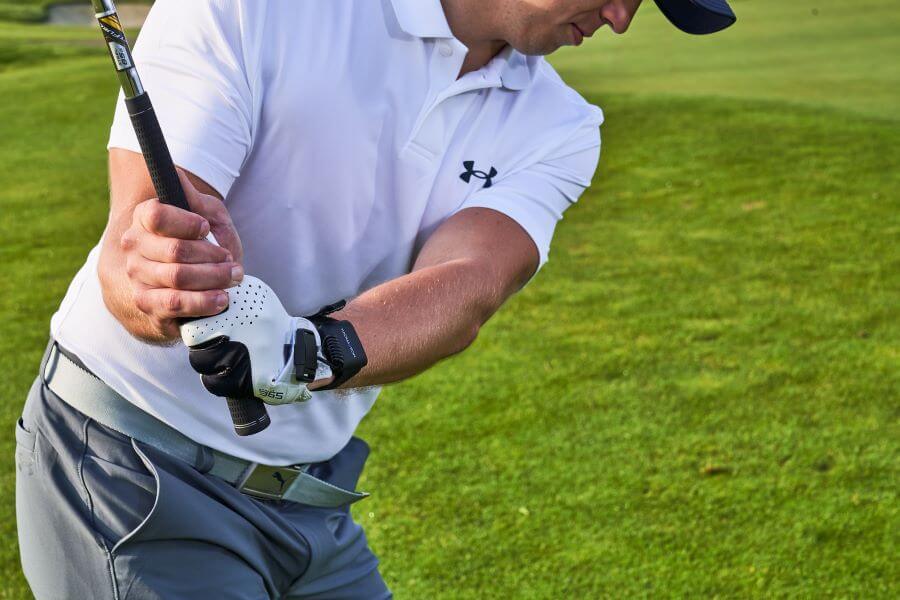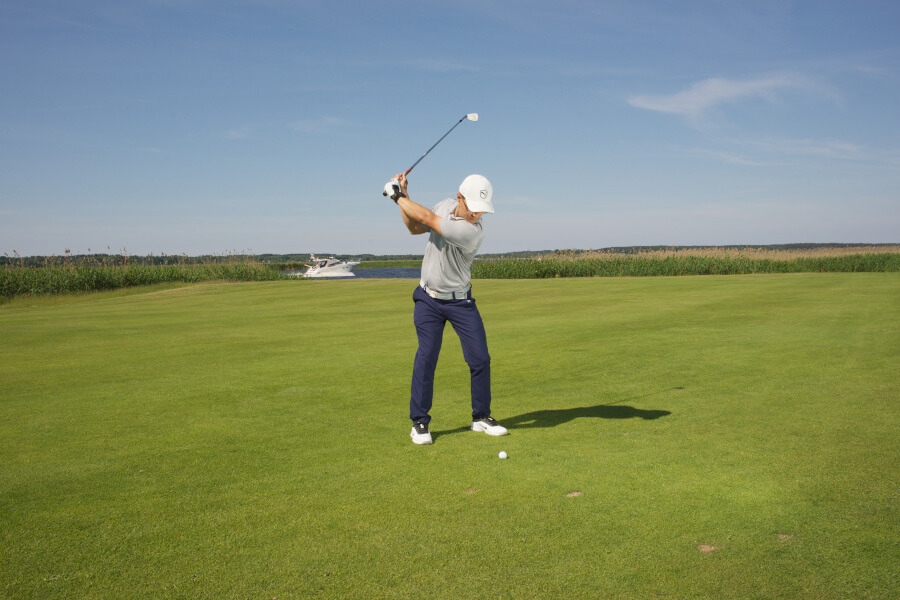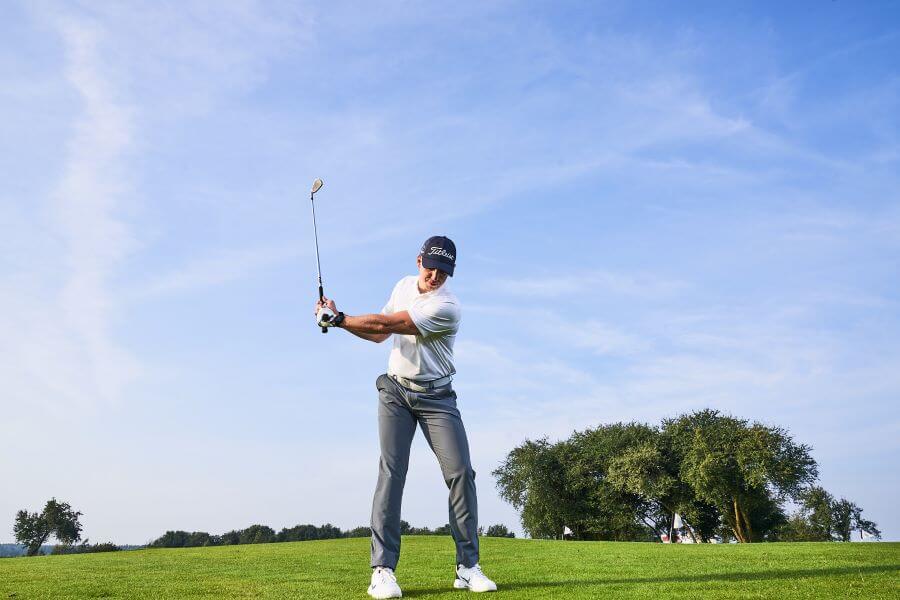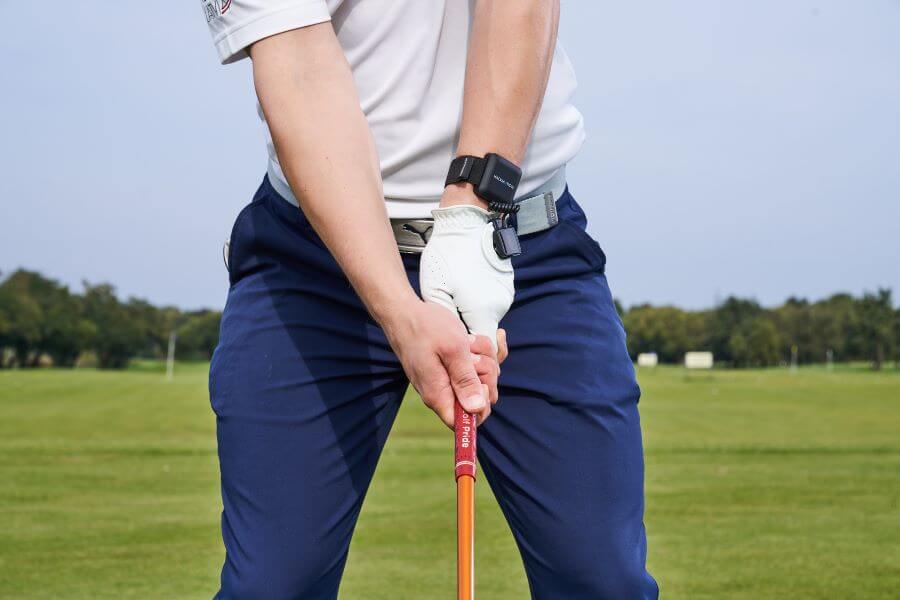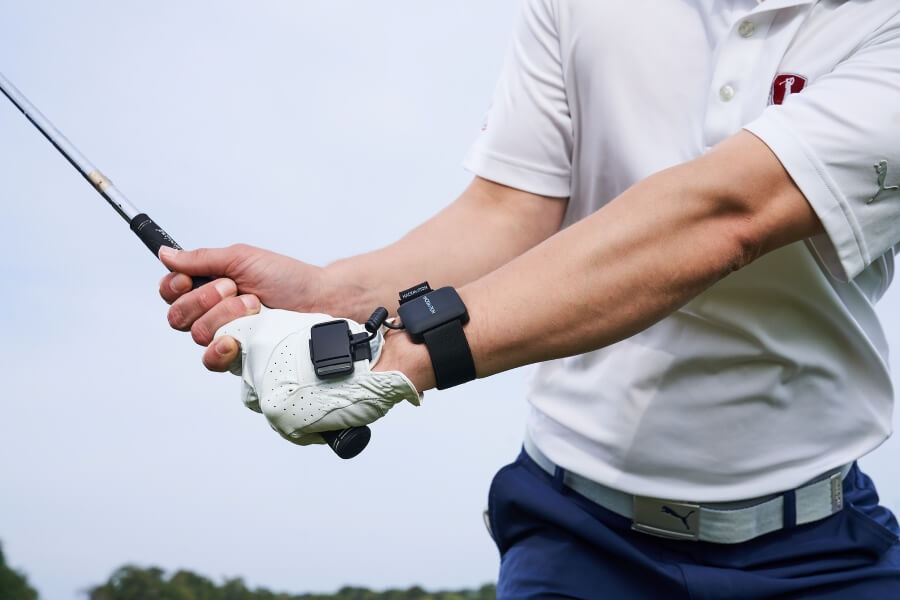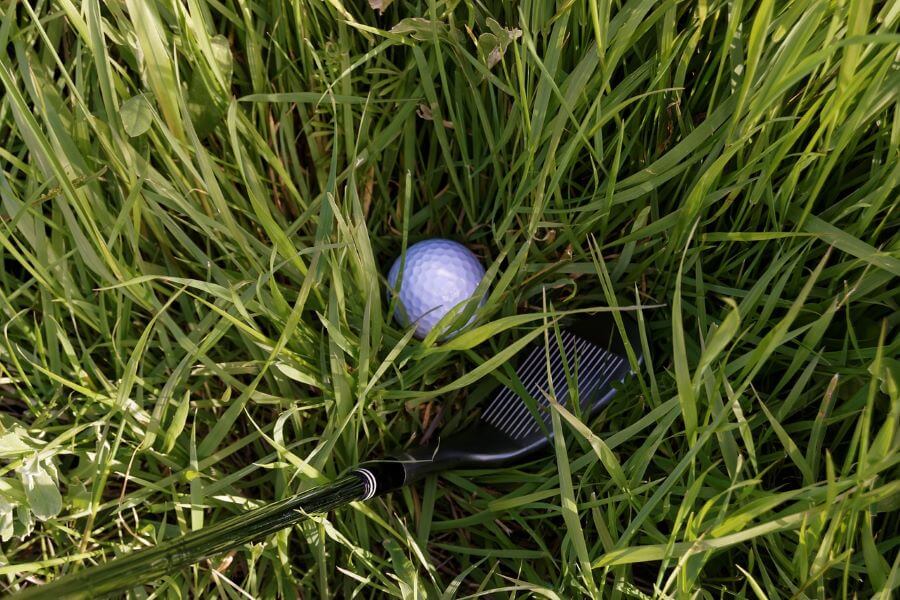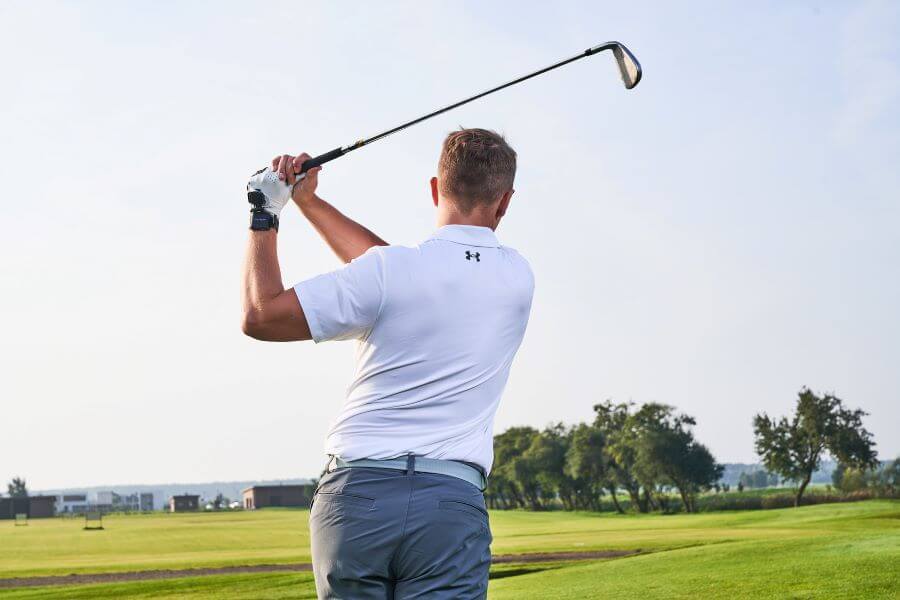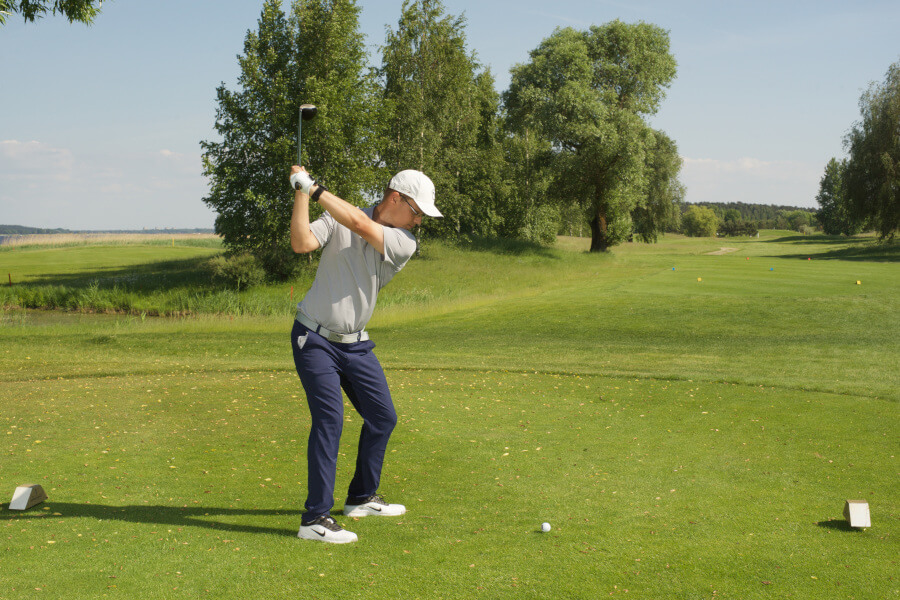Driver Grip vs. Iron Grip – Do They Have to Be Different?
The grip is the starting point of every single golf shot you hit. Our first step is always to put our hands on the club in the proper position. For most golfers, the driver grip vs. iron grip is relatively similar.
However, as you get better at the game, there are some slight differences that have to be addressed.
I’ll show you the driver grip vs. iron grip so that you can make these slight adjustments in your game. Don’t get nervous about having to relearn anything; we can just make some simple tweaks to a neutral grip and get you hitting the driver and the iron with precision.
Key Takeaways
Looking for a quick answer on the differences between the driver grip vs. iron grip?
Here are things you need to know.
- The iron and driver grip are mostly similar, but there are differences in wrist position, grip pressure, and grip strength.
- When comparing the driver grip vs iron grip, it’s important to look at your current shot shape and the shot shape you are trying to achieve.
- Some golfers will use the exact same grip on their driver and iron swing, and that is acceptable.
- Use the HackMotion to ensure consistency in wrist and hand position during the setup.
Contents
Driver Grip Overview
The driver is the longest golf club in the bag, making it the hardest to square up and hit straight.
If you are not utilizing the way your hands are positioned on the club to help you hit the driver straighter, you are probably making the game a little harder on yourself.
With a driver grip, you must ensure you don’t have too much pressure. Lighter grip pressure will help release the club.
In addition, the positioning of your hands has to be in such a way that you can square the clubface at impact.
Finally, when you hit a driver, impact happens as part of the upswing, not the downswing. Therefore the positioning of the hands at impact will have a profound effect on the launch angle.
Iron Grip Overview
Irons are a little heavier than the driver, and instead of hitting up on the ball as you do with the driver, you have to hit down on the ball.
With an iron grip, ensure you have enough grip pressure to control the clubface, but not too tight to change the path of the club. Hanging on too tight creates issues with things like tempo, release, and the club’s path.
The positioning of the hands on the iron grip should be neutral to allow the iron to do what it needs to do at impact and allow you a square clubface.
Hitting down and through the iron shot happens with the wrists slightly forward of the golf ball. The forward press position of the wrists can start at setup, but it’s most important that it returns at impact to create more of a descending blow.
Types of Grips and Grip Positions
As I go through the differences between driver grip vs. iron grip, here are some of the types of grips and grip positions that you should be aware of.
Interlock
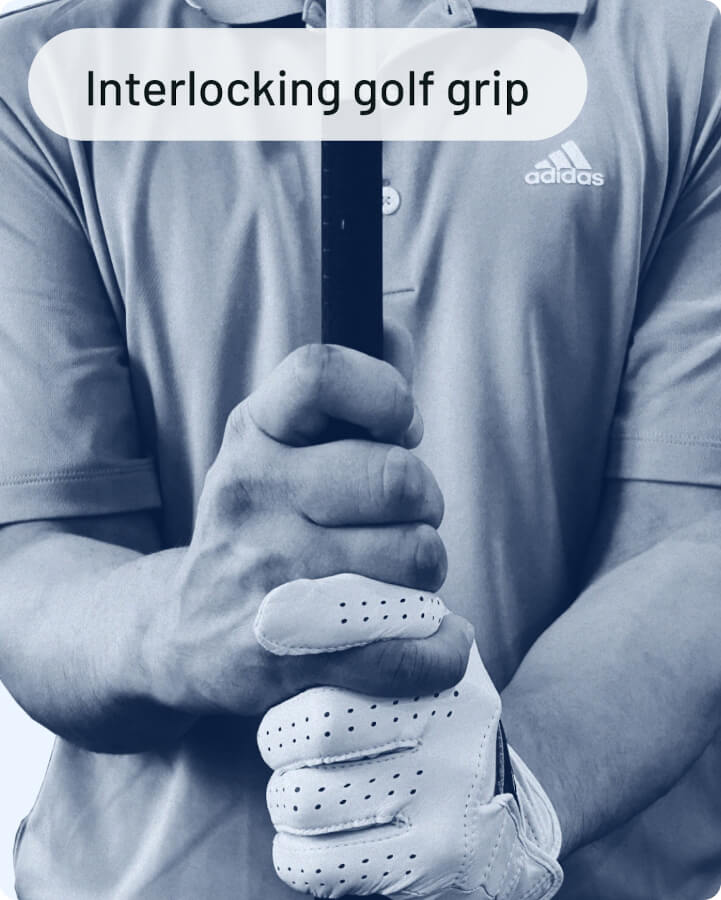
Interlock grips are the most common for golfers with small hands that need a little extra help getting a secure connection with the club. With an interlock grip, the forefinger on the lead hand connects with the pinky finger on the trail hand.
Interlocking has great benefits regarding strength, control, and speed. Be aware of added grip pressure because of that tight hold between the forefinger and the pinky.
Overlap
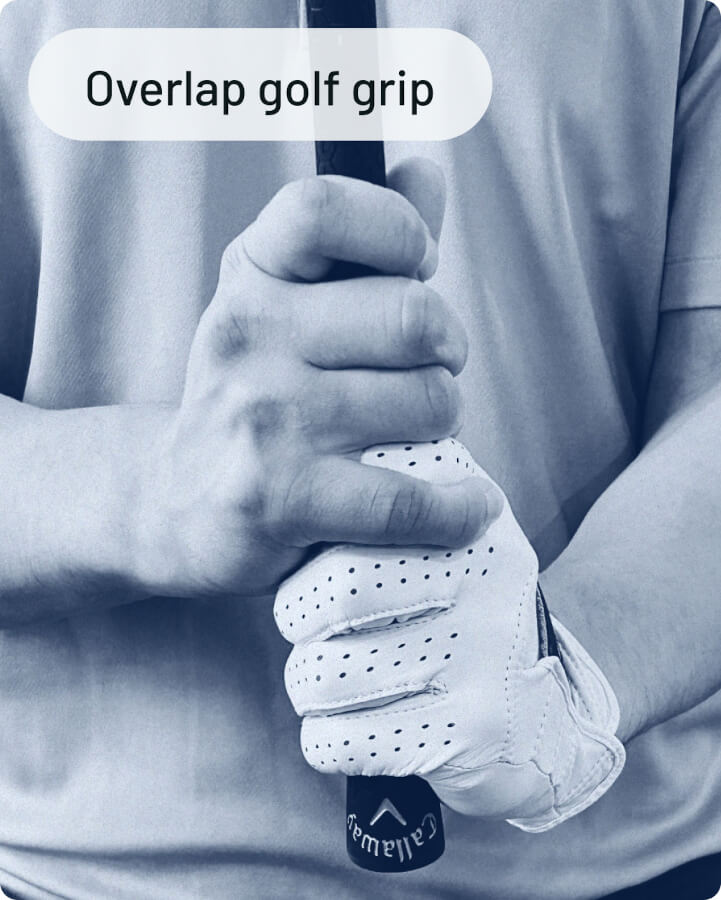
The overlap grip is a great solution for improved grip pressure, and some players believe the overlap increases feedback and feel in a golf swing. For this grip, the pinky finger on the trail hand rests on top of the forefinger of the lead hand.
Overlapping has the most benefit for a golfer with a larger hand and players that are trying to improve the overall feel they have with their golf shots
10 Finger
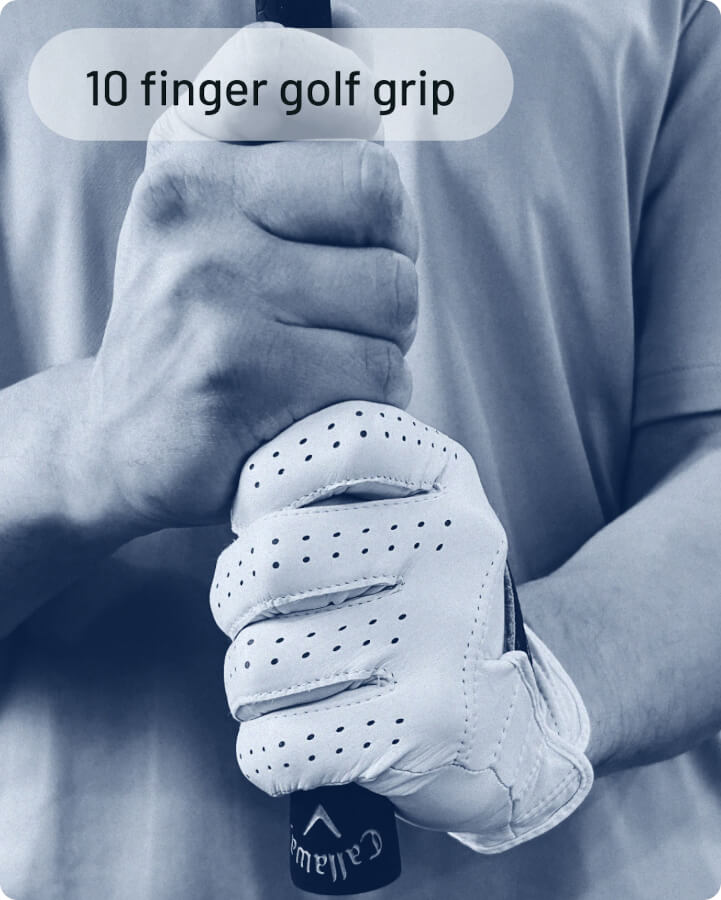
The 10 finger grip is often called a beginners grip. Golfers use the 10 finger when they first learn the game because it is the easiest to learn. The 10 finger grip makes it easy to find a neutral position; your hands will not interlock or overlap on the back of the golf club.
With a 10 finger grip, expect that your hands will be a little more active in your swing, and you have to be aware that they don’t create too much wrist action when they should. The 10 finger grip is a good way to start in the game, but switch to the interlock and overlap when you can.
Strong
A strong grip is one where the left hand is turned a little to the right, and because of that, the right hand ends up a little under the club. The strong grip is a great solution for golfers that need to correct a slice.
Weak
A weaker grip is where the left hand (or lead hand) is turned a little to the left. The left hand turn allows the right hand to be positioned slightly more on top of the golf club. The weak position encourages more of a fade type ball flight.
Neutral
Neutral is a position in which your left hand and right hand will make a V shape that points to your right shoulder. With a neutral position, expect your hands to be positioned in the center of the golf club and your face to be square at setup.
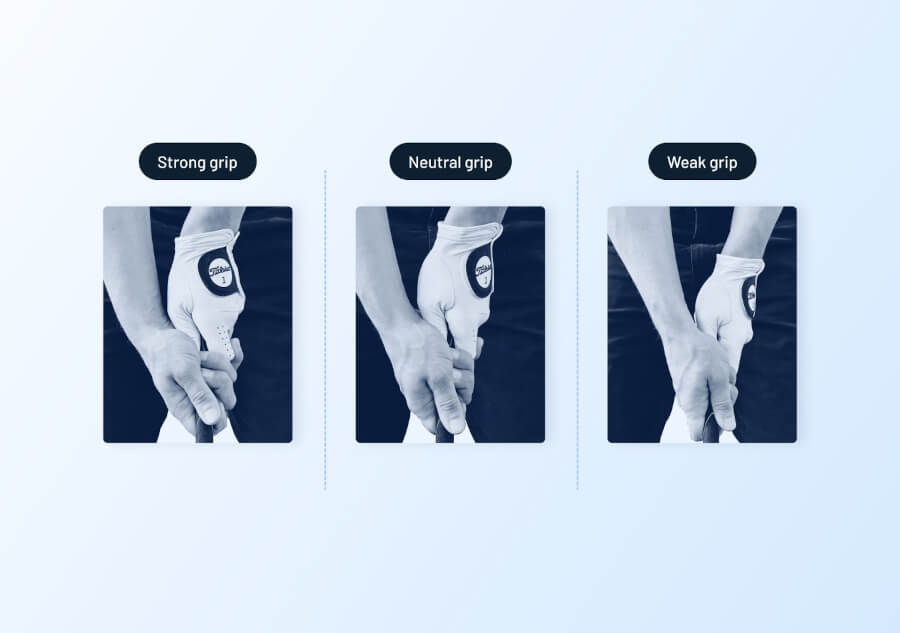
Grip Pressure
Grip pressure can either be tight or lose on the club. Different statements have been made through the years about feeling like you are holding a baby bird or that your hands just barely rest on the club.
In reality, you will want enough grip pressure to maintain a firm hold without it restricting your ability to release the clubhead and square up the face.
The Differences Between Driver Grip vs. Iron Grip
If you hold your driver and your iron the same way and you play great golf, leave it that way. The only time I expect you to change your grip (these are small tweaks) is if you are experiencing inconsistency.
When you hit one perfect drive, and the next three are misses, the grip could be the culprit.
Here are the differences between driver grip vs. iron grip and some slight changes you can make to get your game back on track.
Grip Pressure
Grip pressure is sort of a personal preference in golf. We all know that if you have too much grip pressure, the shot direction and even things like distance can get thrown off. At the same time, if your grip is too loose, you can lose some stability in the clubface at impact.
The perfect grip pressure is where you find that balance between holding the club too tight and not holding it tight enough.
I will tell you that my grip pressure with my driver is slightly higher than it is with my irons. The speed at which I swing the driver is a bit higher, and the little bit of pressure helps me maintain that speed.
Other players have stronger grip pressure in the irons because the club is slightly heavier, and it helps them create the proper angle of attack.
The most important thing here is that the grip pressure is not inhibiting your release of the club. Too much tension in the hands spreads up through the wrists and into the forearms.
Strength
The strength of your grip deals more with the positioning of the hands on the club and how that impacts the clubface through the swing. A neutral grip is the goal for all golfers. Most players can get their hands into a neutral position for the majority of iron shots, and it is a perfect spot.
With the driver being longer and clubhead speeds being higher, it’s more likely that you will slice your driver. One of the most common fixes for a slice is strengthening the grip.
Most players have a slightly stronger grip on their driver than they do their irons, and this is acceptable. All you are doing is accommodating the club that you have in hand. Don’t let your grip get overly strong, or you can see a hook start to develop.
Positioning of the Hands and Wrists
The positioning of the hands and wrists at impact is slightly different for an iron shot and a driver shot.
With an iron in your hands, the hands should be slightly forward of the club head. You can set this position at setup and then return to it at impact. At impact, the lead wrist should be flexed, and the hands slightly ahead of the golf ball to create that descending blow.
With the driver, your hands may actually end up in line with the golf ball or slightly behind it because of this upward attack angle. Getting the hands too far behind the ball can create an extension in the wrist and cause the ball to travel away from the target.
How Does Wrist and Hand Position Play Into Driver Grip vs Iron Grip?
At setup, a driver and an iron look and feel different because of the club length.
Use your HackMotion swing analyzer to develop a baseline on the differences between your wrist and hand position from the driver to the irons. Look at your setup numbers and see how the wrist is positioned.
Most of the time, there is less forward press in the driver swing because there is no need to hit down and through the ball. The impact position is less flexed, and therefore starting with a more neutral wrist and hand position and then maintaining it throughout the swing is fine.
At setup with an iron in the hand, the wrist is pressed forward slightly, and you should be aware of the amount of flexion and extension in your hands when this happens.
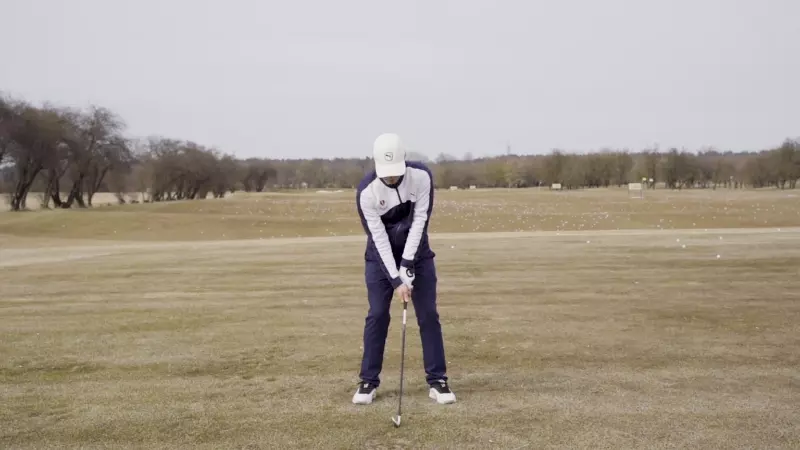
Which Grip is Best for a Driver?
Most golfers, even great players, find that a neutral or slightly strong grip works best with the driver. Keep your grip pressure a little firmer so that the club doesn’t move around too much in the hands.
Which Grip is Best for Irons?
It’s best to have a neutral grip with your irons and maintain a medium amount of grip pressure throughout the swing. Focus on the proper grip pressure points and ensure that you are allowing your arms and wrists to rotate as they should through the ball.
Again, if you are a golfer that really struggles with something like a slice or a hook, the grip can be strengthened or loosened to work for your needs.
Final Thoughts
As you can see, the driver grip vs. iron grip is not a process that needs to get over complicated. The biggest thing to remember is that the driver grip is going to be a little stronger than the iron grip, and you may have to adjust the pressures between the two to work for you.
Use the HackMotion device to measure your position at setup so that you are able to repeat it each time you set up to hit a shot.





